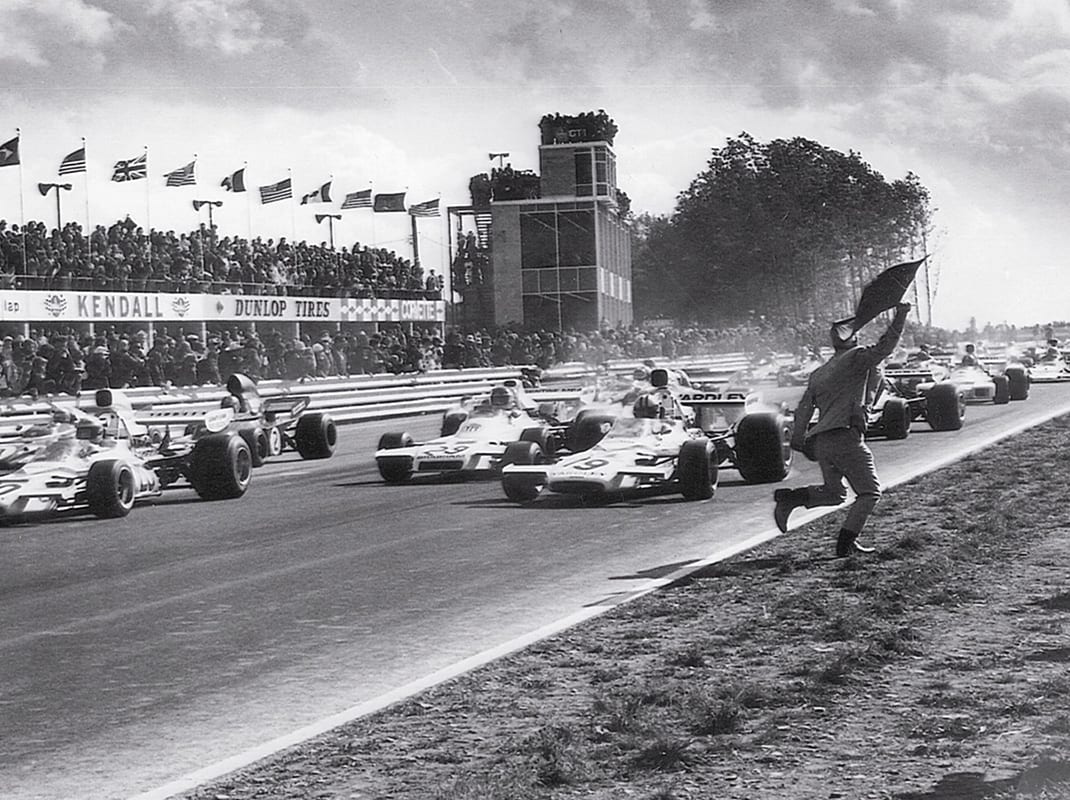As the world economy rebounded following World War II, the automobile industry in the U.S. and Europe experienced a boom. In America, so-called stylists took over the design of automobiles rather than engineers. In Europe, the opposite happened.
European companies such as Alfa Romeo, Ferrari, Jaguar and Maserati focused on engineering development. Americans stationed in Europe were introduced to these cars and immediately saw the difference in performance, speed, etc. When those soldiers returned home, they wanted European automobiles. American car builders had to act.
The result was the introduction of the term “sports car.”
But during the 1940s, there was a problem: There was no way to showcase the engineering innovations on American roads. The result was the renewed popularity of road racing.
In 1944, the Sports Car Club of America was formed. Four years later, on Oct. 2, 1948, Bill Green, track historian at Watkins Glen (N.Y.) Int’l, says a road race was run on a sprawling 6.6-mile course in and around Watkins Glen, N.Y.
Two years later on July 23, 1950, Elkhart Lake, Wis., a small village about an hour north of Milwaukee hosted its first road race on a 3.35-mile circuit, winding through the northern edge of the Kettle Moraine State Forest.
According to “The History of the Elkhart Lake Road Races 1950-’52,” the “sports car racing world had changed considerably. What began as a gentleman’s sport for owners of the new-fangled sports car was fast becoming much more. Factory and dealer sponsorship emerged and race teams were formed.”

In 1951, the SCCA sanctioned the race in Elkhart Lake and dubbed it a national points race, calling it the International Elkhart Lake Road Race. The event drew entries from across the U.S. To handle the demand, the course was extended to 6.5 miles, winding through parts of the village’s downtown. Quickly, the event became a go-to destination for racers and race fans. A newspaper article estimated more than 100,000 fans lined the roads that made up the circuit with more than 230 cars entered.
According to the national registry listing for the Elkhart Lake Road Circuits, SCCA President Fred Wacker told The Sheboygan Press, “This Elkhart Lake course is the fastest and safest in the country and this international race is fast competing with Watkins Glen, N.Y., as the premier event in road racing in the United States.”
However, not everyone was a fan of the concept.
Werner Markwitz had a cottage on the south side of Elkhart Lake, which was situated along part of the course used in 1951 and ’52. Because the races were held on public roads, residents were forced to remain in or at their homes while races were conducted. In 1950, that wasn’t an issue as the layout of that course didn’t impact many residents and for the ones it did they agreed to cooperate.
Markwitz was angry about being confined to his property. He also thought it was unlawful that, at taxpayers’ expense, employment of state and county officers was used to prevent use of highways by non-race participants.
He filed a protest but no action was taken, keeping the races intact. Safety was also quickly a growing concern. The rapid growth of the crowds made assurance of public safety nearly impossible. For the race in 1952, 50 special deputies and 105 military police were used.
Two weeks later in Watkins Glen, Frank Fazzari, a 7-year-old spectator, was killed when a car ran into a crowd of spectators, killing the boy and injuring 12 others.
Throughout the country, lawmakers went to work to ban racing on public roads. In New York, legislators introduced a bill to ban all road racing. Wisconsin lawmakers also worked on similar legislation. The New York bill passed the Senate but was held up in the Assembly and never became law.
However, Green said, state officials decided it wouldn’t distribute permits for road racing on state-maintained roads. In Wisconsin, a bill that would’ve allowed county boards to authorize road racing on county roads never made it to the legislative floor and road racing was finished.
Racing enthusiasts decided to look for an alternative: permanent and enclosed race tracks.
Click below to continue reading.
